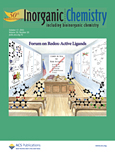Attempts to prepare mixed-ligand zinc–zinc-bonded compounds that contain bulky C5Me5 and terphenyl groups, [Zn2(C5Me5)(Ar′)], lead to disproportionation. The resulting half-sandwich Zn(II) complexes [(η5-C5Me5)ZnAr′] (Ar′ = 2,6-(2,6-iPr2C6H3)2-C6H3, 2; 2,6-(2,6-Me2C6H3)2-C6H3, 3) can also be obtained from the reaction of [Zn(C5Me5)2] with the corresponding LiAr′. In the presence of pyr-py (4-pyrrolidinopyridine) or DBU (1,8-diazabicyclo[5.4.0]undec-7-ene), [Zn2(η5-C5Me5)2] reacts with C5Me5OH to afford the tetrametallic complexes [Zn2(η5-C5Me5)L(μ-OC5Me5)]2 (L = pyr-py, 6; DBU, 8), respectively. The bulkier terphenyloxide ArMesO– group (ArMes = 2,6-(2,4,6-Me3C6H2)2-C6H3) gives instead the dimetallic compound [Zn2(η5-C5Me5)(OArMes)(pyr-py)2], 7, that features a terminal Zn–OArMes bond. DFT calculations on models of 6–8 and also on the Zn–Zn-bonded complexes [Zn2(η5-C5H5)(OC5H5)(py)2] and [(η5-C5H5)ZnZn(py)3]+ have been performed and reveal the nonsymmetric nature of the Zn–Zn bond with lower charge and higher participation of the s orbital of the zinc atom coordinated to the cyclopentadienyl ligand with respect to the metal within the pseudo-ZnL3 fragment. Cyclic voltammetric studies on [Zn2(η5-C5Me5)2] have been also carried out and the results compared with the behavior of [Zn(C5Me5)2] and related magnesium and calcium metallocenes.
Article of the month
Chemical Reactivity and Electrochemistry of Metal–Metal-Bonded Zincocenes
Mario Carrasco, Riccardo Peloso, Irene Resa, Amor Rodri?guez, Luis Sa?nchez, Eleuterio A?lvarez, Celia Maya, Rafael Andreu, Juan Jose? Calvente, Agusti?n Galindo, and Ernesto Carmona
Inorganic Chemistry, 2012, Vol. 50, 6361–6371IIQ



 Español
Español